-
June 8, 2015
Session 1. Precursors
Series presentation: Gabriel Villota, series curator.
Martha Graham and Alexander Hammid. Night Journey. 1947-1961, 28’
Maya Deren. A Study in Choreography for Camera. 1945, 3’
The three pieces that make up this first programme possibly foretold the paths that would be taken by the primary manifestations of film and dance in video over the course of the second half of the 20th century. Alexander Hammid’s production of Night Journey by Martha Graham, who rejuvinated modern dance in the first half of the 20th century, anticipates what would later become classic TV productions of genre, while A Study in Choreography for Camera by Maya Deren, a choreographer and experimental film-maker, observes the widespread potential of the Avant-grade in serving a new way of conceiving the dancing body on screen. Likewise, this became a precedent for new forms of cinema and dance in video in the decades that followed. Moreover, Anna Halprin, from her radical position on the periphery, knew how to take these bodies dancing for the camera outside the studio or the stage in works like Hangar, offering conceptual and expressive tools for a new generation of choreographers who would be on the verge of turning things around a few years later.
-
June 11, 2015
Session 2. Around / From Black Mountain College
Robert Rauschenberg. Pelican. 1963, 2' 19''
Robert Rauschenberg. Linoleum. 1967, 13’
Merce Cunningham and Richard Moore. Assamblage. 1968, 58’
The courses and encounters that took place across the 1950s at Black Mountain College represented a key moment in understanding the progression of the second wave of avant-garde movements, as well as explaining the emergence of a new sphere of artistic experiences that would erupt in the 1960s, in which the overlap of artists such as Robert Rauschenberg, John Cage, Merce Cunningham, David Tudor, Allan Kaprow and Stan VanDerBeek, and many others, would articulate previously unseen levels of collaboration. This climate enabled the advent of the first happenings (Kaprow), the foundation of Merce Cunningham’s company (together with Rauschenberg as stage designer and Cage as composer), and numerous other pivotal experiences in the years that followed. Thus, there is a need to stress how the development of this milieu was decisive in body arts, performance and presence gaining particular relevance, whereby filming the pieces would add a new degree of complexity.
-
June 15, 2015
Session 3. The Audiovisual Canon of Merce Cunningham
Merce Cunningham and Charles Atlas. Blue Studio: Five Segments. 1976, 16’
Merce Cunningham and Charles Atlas. Fractions I. 1978, 32’59”
Beyond his participation at Black Mountain College, the choreographic work of Merce Cunningham was visibly unparalleled over the decades that followed. Regardless of his permanent interdisciplinary collaboration with John Cage, Robert Rauschenberg and Stan VanDerBeek, there is a strong need to study how his works designed for the camera evolved over the years. Following the first tentative phase, in the first half of the sixties, it would be in the next decade when, in his collaboration with the producer Charles Atlas, Cunningham’s dance videos and films would start to provide, for the first time, a whole repertoire of expressive possibilities based on the use of camera movement, the search for an almost physical viewpoint, joined to the dancer’s body, and the articulation of film space through montage. This method would ultimately become established as a type of canon for him and for the next generations of choreographers with an interest in understanding these new discursive artefacts (video pieces) as something more than the simple recording of actions.
-
June 18, 2015
Session 4. Performance, New Dance and Minimalism I
The Living Theatre. Realization: Gwen Brown. Emergency . 1968, 29’
Robert Morris and Stan VanDerBeek. Site . 1964, 18’45”
Simone Forti. Solo no. 1 . 1974, 18’40”
The tumultuous scene in the 1960s would continue to generate forms of artistic behaviour that would coincide with performance and dance, in reference to the centrality of the body and the intrinsic difficulties in any of its forms of representation. Artists from the field of sculpture, for instance Robert Morris, and those that crossed through the eruption of Minimalism, would find in collaborations with performers such as Carolee Schneemann (who came from a Judson Dance Theater context, despite not being a dancer) and film-makers like Stan VanDerBeek (from Cunningham’s company) an open channel of work, in which the visual results of pieces like Site occurred simultaneously with what dancers like Simone Forti were experimenting with inside the framework of the Judson Dance Theater in that decade. Similarly, the Living Theatre can be found on this common ground between artists and collectives, although their radical experimentation would come from a seemingly distant tradition, for instance theatre. Emergency, clearly indebted to Direct Cinema, displays a repertoire of political actions through the individual and collective body that are confused with the approaches of Schneemann and Forti, among others.
-
June 22, 2015
Session 5. Performance, New Dance and Minimalism II
Bruce Nauman. Dance or Exercise on the Perimeter of a Square (Square Dance). 1967-1968, 8'
Trisha Brown and Babette Mangolte. Watermotor. 1978, 7’
Yvonne Rainer and Sally Banes. Trio A (The Mind is a Muscle, Part I). 1966-1978, 10’30”
Steve Paxton. Realization: Steve Christiansen, Lisa Nelson. Fall After Newton. 1983, 23’
When speaking of contemporary dance and experimentation from corporal practices, we must refer to a moment in time that stemmed from the Judson Dance Theater collective, and the time when, in addition to Simone Forti, other choreographers appeared, for instance Yvonne Rainer and Trisha Brown, as well as dancers from Cunningham’s company, such as Steve Paxton. All of them rejected any idea related to academic virtuosity (from the perspective of traditional ballet, or from modern dance), and in pieces such as the three selected for this programme they looked to draw inspiration from daily life, directly experimenting with the space encircling study and fully simplifying gestures. These interventions converged with actions explored by some artists from minimalist sculpture, for instance Bruce Nauman, and from seemingly remote starting points. For most, the appearance of portable film formats (super 8) and video (portapaks) would be key to recording their artistic explorations in a much more dynamic and participatory way.
-
June 25, 2015
Session 6. Rereadings of the Triadic Ballet
Debra McCall. Realization: Robert Leacock. Bauhaus Dances. 1986, 30’
Gerhard Bohner. Realization: Henk van Dijk. Das Triadische Ballet. 1970, 70’One highly exceptional case in dance cinema is made up of audiovisual pieces produced at different times through the notes, jottings, photographs and drawings that Oskar Schlemmer would leave from his Das triadische ballett (Triadic Ballet) in 1922. A part of the Museo Reina Sofía Collection, the Triadic restored, through the syncretic spirit of the avant-garde, the idea of the Gesamtkunstwerk (Wagner’s “total work of art”), bringing the new representation of the moving human body into the foreground, hybridised using the technique fostered by modernity. These characteristics saw it become a compulsory reference point in contemporary dance, rescuing it at different times. In these two examples a type of out-of-the-ordinary and transhistorical connection materialised, where the spirit of the Bauhaus appeared recovered in televised filming, first in the 1970s by Germany’s Gerhard Bohner – a dancer and pupil of the expressionist choreographer Mary Wigman – and later by Debra McCall, from North America, who in turn would receive classes from Merce Cunningham, and would reconstruct these pieces in the 1980s. Both works hit the mark in transferring experimental offerings to our world, from more recent audiovisual language, focused on the body and the machine that were so commonplace in past avant-garde movements.
-
June 29, 2015
Session 7. Post-modern Dance and Musical Minimalism
Anne Teresa de Keersmaker. Realizatión: Thierry de Mey. Fase. 1982, 52’
Some years after (almost a decade) its influence was left on the North American scene, it is interesting to observe how Minimalism would reach Europe from a different perspective, this time influenced by the music associated with this style. In particular, it is worth highlighting this audiovisual piece by Anne Teresa de Keersmaker, a milestone from that period. Based on the rhythmic patterns, serial progressions and structural growth through loops that characterised the music of Steve Reich, it opened up a new and especially fruitful path in the Central European scene in the years that followed. Despite the fact that there was already previous contemporary film-making on choreography, it wasn’t until 2002 when Thierry De Mey, a regular choreography collaborator, finalised the comprehensive version of the piece, adding locations that differed from the originals. Faithful to the spirit inherited from Minimalism, de Keersmaker would strive to emphatically mark the geometric appearance of her choreographic creations, on this occasion as a counterpoint to the starkness of diverse national and industrial scenes the film-maker searched for.
-
July 1, 2015
Session 8. Le Sacre du Printemps
Maurice Béjart. Le Sacre du Printemps. 1970, 36’
Pina Bausch. Le Sacre du Printemps.1975, 37’
Another anachronistic moment that enables us to jump from the first avant-garde movements to post-modernity came from the production of these two television reconstructions of Nijinsky’s ballet for Igor Stravinsky’s work, which, in 1913, caused a huge scandal, created more by the choreography than the music score (Le sacré du Printemps would be performed for a long period only as an instrumental piece, until Léonide Massine produced a new choreography in 1920). The freneticism of dance, the excessive sensuality and primitivism of bodies was too much for the Parisian audience of the time. Not keen to search for a historicist reproduction, Maurice Béjart adapted his interpretation of the work – conceived at the end of the 1950s – to the television medium in the 1970s, and from an Apollonian perspective of dance (gymnastic, muscular, predominantly virile). A few years after Béjart’s television adaptation, Pina Bausch took up the same challenge, obtaining a radically different result from a perspective that was much more Dionysian and in some ways symbolically feminine.
-
July 2, 2015
Session 9. The Appearance of the Voice and Language
Samuel Beckett. Not I. 1973, 10’
Charlemagne Palestine. Body Music I.1973-1975, 13’
Vito Acconci. Open Book. 1974, 10’09”
Meredith Monk and Robert Withers. 16 Millimeter Earrings . 1966-1979, 25’
Laurie Anderson. O Superman. 1981, 8’30”
Trisha Brown and Jonathan Demme. Accumulation with Talking Plus Watermotor. 1985, 10’12”
Anything classical ballet and modern dance have in common rose to the fore well into the 1960s when both disciplines worked from a concept of the silent body. Nevertheless, the revolution of forms and concerns that would emerge in these years contributed to bodies being heard, not just because of their movement on the floorboards, but also for letting their voice, and with it their language, be heard. Although it was in the Judson environment where this happened for the first time, for instance in some of Trisha Brown’s first pieces, it would become more pronounced in works where the performer’s voice was directly blended into the music, as in the work of Meredith Monk. Here the results were confused with what the experimental artists and musicians from the time, such as Vito Acconci and Charlemagne Palestine, experimented with in their video pieces, which would also have heavy repercussions on certain artists from the next generation, like Laurie Anderson. In their works we hear an acousmatic voice, which becomes independent from the body and speaks from an unknown space, the same space as the voice which, foreshadowing this journey, comes out of a bodiless mouth in certain adaptations of Samuel Beckett’s works for television. This disembodiment would define one of the most significant approaches in the years that followed.
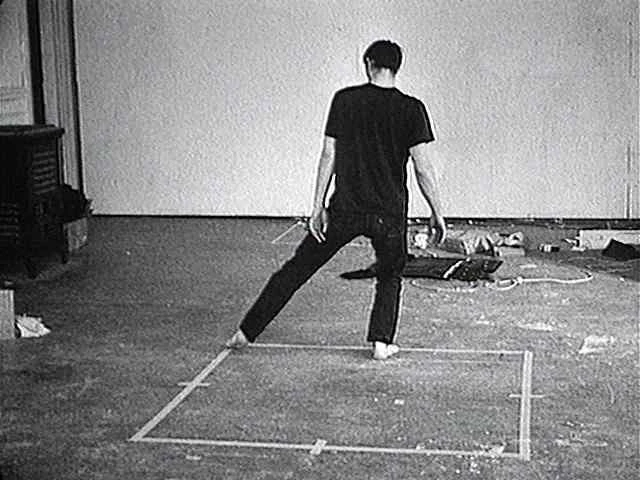
Held on 08, 11, 15, 18, 22, 25, 29 jun, 01, 02 jul 2015
A debate runs through a whole century of images of bodies in movement: that which refers to the correspondence between these bodies in live performance (on stage, in the gallery or museum) and in film. Through this question, the aim is to elucidate whether the audiovisual record of practices in which the body is at the centre – contemporary dance and artistic performance – faithfully reflects its apparent inherent truth.
This series aims to highlight the different moments across the history of art, cinema and contemporary dance that have become unique landmarks from which to observe this discussion. Moreover, and in line with the above, it endeavours to present, through a historical journey, how the debate between dance and presence in performance, on one side, and its filmed records, on the other, would be overcome by everything that happened in the 1960s surrounding the reciprocal contamination between diverse expressive mediums, ultimately shaping a new sphere defined as intermedia.
Itinerary
Azkuna Zentroa, Bilbao (October 19 - November 24)
Curatorship
Gabriel Villota Toyos
Itinerancies
Azkuna Zentroa, Bilbao
19 October, 2016 - 24 November, 2016
Más actividades
![Metahaven, The Sprawl: Propaganda about Propaganda [La diseminación: propaganda sobre propaganda], 2015, película](https://recursos.museoreinasofia.es/styles/small_landscape/public/Actividades/interfaz_emotiva_0.jpeg.webp)
EMOTIVE INTERFACE. The Films of Metahaven
Thursday, 27, Friday, 28, and Saturday, 29 November 2025 – check times
The Museo Reina Sofía and the Márgenes International Film Festival in Madrid, here in its fifteenth edition, present this series devoted to the artist collective Metahaven. The programme is framed inside the working strand both institutions started in 2024, focusing on an exploration of contemporary audiovisual narratives, a hybridisation of languages and the moving image as a tool for practising critical gazes on the present. Emotive Interface. The Films of Metahaven comprises two sessions of screenings and a masterclass delivered by the collective, centring on the relationship between the internet, technology, time and the moving image. All sessions will be presented by the artists.
The work of Metahaven — Dutch artist duo Vinca Kruk and Daniel van der Velden — encompasses graphic art, video, installations, writing and design around urgent issues related to governance, identity, power and transparency in the digital age. Thus, their practice stands at the crossroads of art, film and critical thought, as they employ visual language as a tool to explore the tensions between technology, politics and perception, their practice combining the rigour of the visual essay and a strong poetic component, where graphic design, digital animation and documentary material fuse into dense, emotionally ambiguous compositions that speak of post-digital romanticism through an allegorical formulation. The spotlight of this series shines brightly on some of Metahaven’s recent works, for instance The Feeling Sonnets (Transitional Object) (2024), in which they examine language, poetry and digital time, and on The Sprawl (Propaganda About Propaganda) (2015), an essay which explores how the internet and social media have radically altered the relationship between truth, power and perception. Finally, the duo’s masterclass is set forth here as a survey of the main themes explored by both artists.
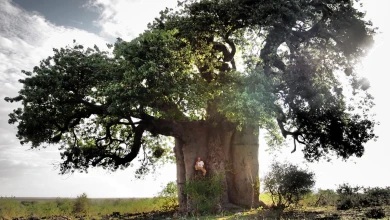
Francisco López and Barbara Ellison
Thursday, 11 December - 8pm
The third session in the series brings together two international reference points in sound art in one evening — two independent performances which converse through their proximity here. Barbara Ellison opens proceedings with a piece centred on the perceptively ambiguous and the ghostly, where voices, sounds and materials become spectral manifestations.
This is followed by Francisco López, an internationally renowned Spanish sound artist, who presents one of his radical immersions in deep listening, with his work an invitation to submerge oneself in sound matter as a transformative experience.
This double session sets forth an encounter between two artists who, from different perspectives, share the same search: to open ears to territories where sound becomes a poetic force and space of resistance.
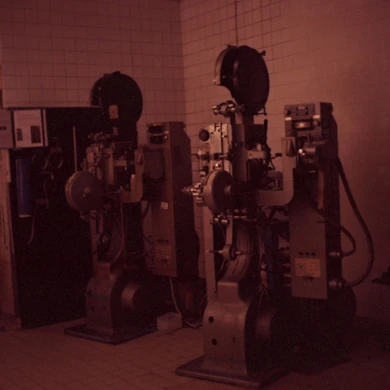
Long Live L’Abo! Celluloid and Activism
4, 5, 6 DIC 2025
The third instalment of Cinema Commons, a research, programming and publishing project which explores how film articulates interpretive communities, fosters collective debate and devises proposals for common spaces, presents L’Abominable, an artist- and film-maker-run independent film-lab founded in 1996 on the outskirts of Paris. The programme is structured around three sessions: a lecture-workshop on L’Abominable, conducted by film-makers Pilar Monsell and Camilo Restrepo; a session of short films in 16mm produced in L’Abominable; and the feature-length film Une île et une nuit (An Island and One Night), made by the Les Pirates des Lentillères collective.
Better known by the shortened version of L’Abo, the artist-run laboratory emerged in response to disappearing infrastructures in artisan film-making and endeavours to offer the creative community a self-managed space in which to produce, develop and screen films in analogue formats such as Super8, 16mm and 35mm. With this underpinning, L’Abo champions the aesthetic and political experimentation of analogue cinema opposite digital hegemony.
L'Abominable, more than a simple work tool, has become a space of artistic and social exchange which has knitted together a community. It is characterised by endowing technique with a poetic dimension, in a community that manufactures its own film devices, and situates pedagogy at its core — the film-makers and artists train one another on common ground. Further, it seeks to forge an opening to all experimental languages around celluloid, for instance installation and film performance, while constituting a place of preservation and conservation in the history of the medium.
L'Abominable is an example of how, at the height of the digital age, artists and film-makers are recovering cinematography and vindicating the production process in its entirety. This autonomy invents alternative routes in the industry as it creates new tools, develops other forms of expression and explores unknown cinematic territories.
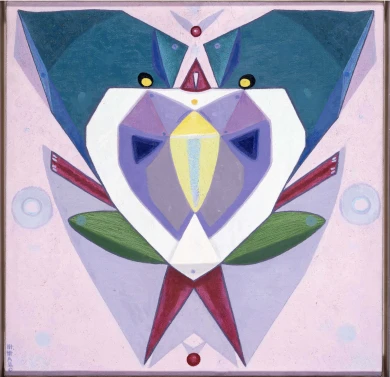
Estrella de Diego Lecture. Holding Your Brain While You Sleep
Wednesday, 3 December 2025 – 7pm
Framed inside the Museo Reina Sofía’s retrospective exhibition devoted to Maruja Mallo, this lecture delivered by Estrella de Diego draws attention to the impact of the artist’s return to Spain after her three-decade exile in Latin America.
Committed to values of progress and renewal in the Second Republic, Mallo was forced into exile to Argentina with the outbreak of the Civil War and would not go back to Spain to settle definitively until 1965 — a return that was, ultimately, a second exile.
Mallo saw out her prolific artistic trajectory with two impactful series: Moradores del vacío (Dwellers of the Void, 1968–1980) and Viajeros del éter (Ether Travelers, 1982), entering her most esoteric period in which she drew inspiration from her “levitational experiences” of crossing the Andes and sailing the Pacific. Her travels, both real and imaginary, became encounters with superhuman dimensions.
In parallel, her public persona gained traction as she became a popular figure and a key representative of the Generation of ‘27 — the other members of which also started returning to Spain.
This lecture is part of the Art and Exile series, which seeks to explore in greater depth one of the defining aspects of Maruja Mallo’s life and work: her experience of exile. An experience which for Mallo was twofold: the time she spent in the Americas and her complex return to Spain.
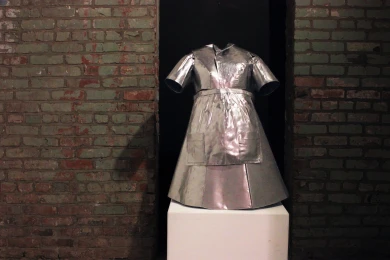
Haunting History
Friday, 28 November 2025 – 6pm
Curator Patricio Majano invites writer Elena Salamanca, artist Beatriz Cortez and artist and writer Olivier Marboeuf to explore, in conversation, the political agency of artistic forms in relation to the spectral resonances in Central America, the Caribbean, and their diasporas.
Central America is a region inhabited by spectres that continually interrupt any attempt at historical closure. Five centuries of colonisation, counterinsurgency wars, genocides, dictatorships and deportations have resulted in accumulated traumas and persistent forms of violence that still move around under the surface of the present. More than past ruins, these spectres are material forces which persist, invade and reclaim the reparation and reconfiguration of the frameworks of historical legibility. In Central American artistic practice, these spectral presences become method, counter-archive and counter-pedagogy.
Taking El Salvador as both axis and prism, this conference seeks to think about “ghostliness”, not as a metaphor but as a political and aesthetic technology, from the following questions: How is that which persists beyond disappearance manifested? Who speaks from amputation? How does memory operate when the State apparatus has systematically searched for its erasure? How is the spectral tapped into as a form of resistance? Which conditions and methods allow art to articulate a claim, reparation and justice when hegemonic narratives are upheld in denial?
Over the course of 2025, these questions have articulated the research residency of Salvadoran curator Patricio Majano in the The Cáder Institute of Central American Art (ICAC) by virtue of the project Amputated Identities: Ghosts in Salvadoran Art. Majano’s research traces genealogies and resonances between Salvadoran contemporary art, the Indigenous genocide of 1932 and the Civil War (1980–1992), interrogating how these unresolved forms of violence operate with artistic subject matter.
Beyond a closing act of the ICAC residency, this encounter stresses exchange and dialogue as method: opening the process and sharing questions, tensions and unresolved challenges — not as conclusions, but as work in progress.
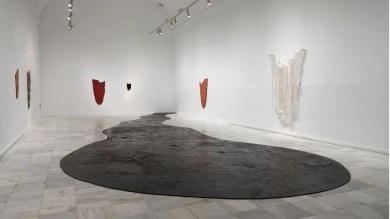
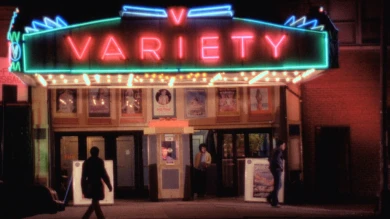
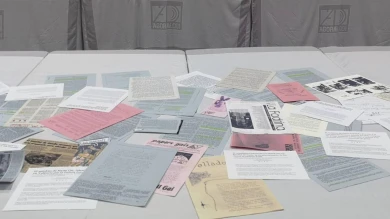
![Miguel Brieva, ilustración de la novela infantil Manuela y los Cakirukos (Reservoir Books, 2022) [izquierda] y Cibeles no conduzcas, 2023 [derecha]. Cortesía del artista](https://recursos.museoreinasofia.es/styles/small_landscape/public/Actividades/ecologias_del_deseo_utopico.jpg.webp)
![Ángel Alonso, Charbon [Carbón], 1964. Museo Reina Sofía](https://recursos.museoreinasofia.es/styles/small_landscape/public/Actividades/perspectivas_ecoambientales.jpg.webp)